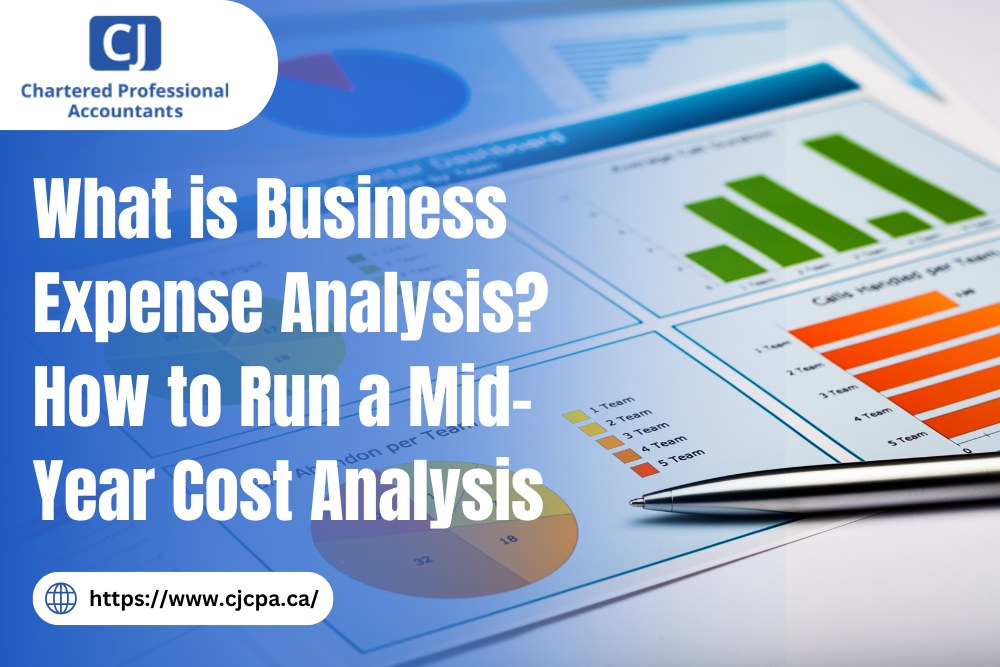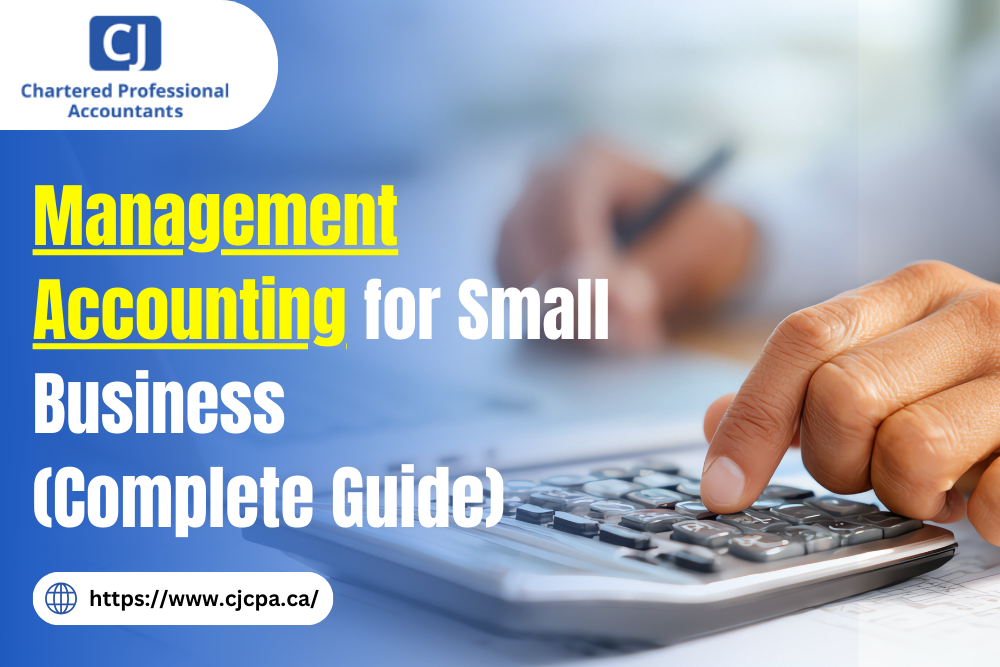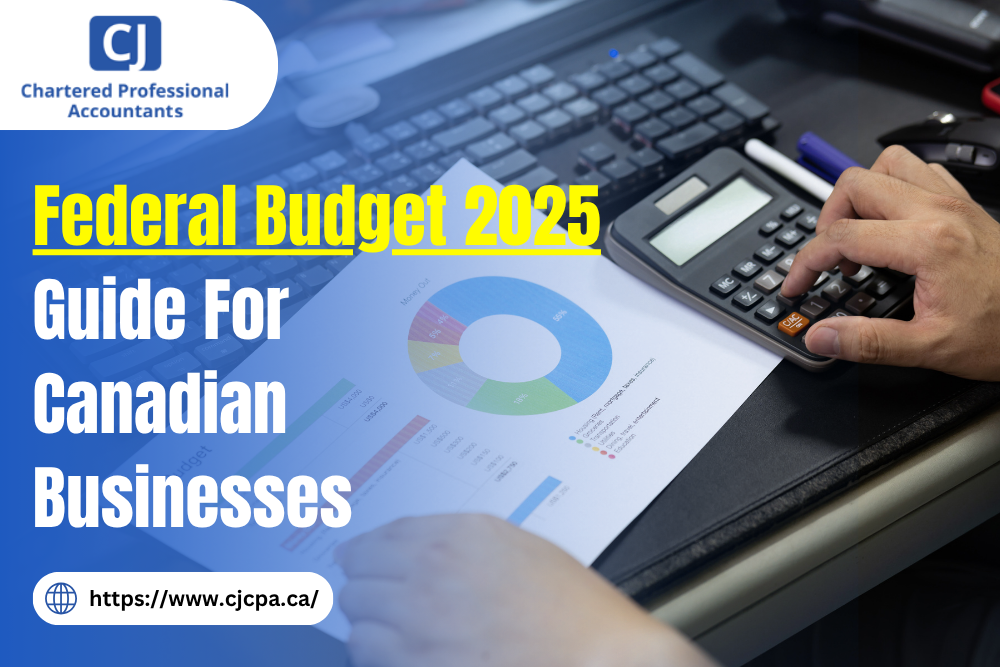What is Business Expense Analysis? How to Run a Mid-Year Cost Analysis
Stay updated with current accounting standards, business compliance, tax preparation tips, and latest news.

11 Aug 2025
Have you ever looked at your bank account and thought, “Where did all the money go?”
You’ve been working hard, your sales look decent, yet somehow the profits feel smaller than they should. This is one of the most frustrating situations for any business owner. The truth? You might be leaking money in places you’re not even aware of, and it’s hurting your business finances.
Many small and medium-sized businesses don’t realize they’re overspending until the year is almost over, and by then, it’s too late to fix it. That’s why a mid-year cost analysis can be a game-changer. It’s like giving your finances a health check-up halfway through the year so you can make quick adjustments before more money slips away.
At CJCPA, we’ve seen how just a few overlooked subscriptions, high vendor fees, or unnecessary extras can add up to thousands of dollars in lost profit. Let’s break down exactly how to analyze your business expenses without jargon, complicated formulas, or endless spreadsheets.
What Is a Business Expense Analysis?
A business expense analysis is simply a detailed look at where your money is going, why it’s being spent, and whether it’s worth it. Think of it as looking under the hood of your business to check if all the moving parts are working efficiently. It’s not the same as bookkeeping - bookkeeping is about recording what happened. Expense analysis is about asking, “Should this have happened? And if so, could we have done it for less?” For example, a quick expense analysis report might reveal that your software subscription costs have doubled in the last year without you noticing. That’s something you can fix immediately.Why Mid-Year Is the Best Time to Review Your Costs
Waiting until year-end means you’re looking at problems in the rear-view mirror. At mid-year, you still have six months to make real changes.- You’ve got enough data from the first half of the year to see trends.
- You can make quick budget adjustments for Q3 and Q4.
- You can negotiate better vendor contracts before renewal dates.
The Different Types of Business Expenses You Should Track
Before you can improve your business expenses, you need to know exactly what you’re working with.- Fixed Costs These don’t change month to month - rent, salaries, insurance, etc.
- Variable Costs These go up and down depending on your sales or operations - utilities, materials, hourly wages, etc.
- Semi-Variable Costs Part fixed, part variable - like marketing campaigns or seasonal staff, etc.
- One-Time or Capital Costs Big purchases - new equipment, office renovations, etc.
Step-by-Step: How to Analyze Your Business Expenses
Here’s how our business accountants approach an expenditure analysis that actually drives results:1. Gather Accurate Data
Pull everything together - accounting software reports, bank statements, receipts. Make sure personal and business finances are separated.2. Categorize Every Transaction
Use consistent categories so your analysis is clear. Mislabeling items makes the numbers meaningless.3. Compare Expenses to Revenue
Look at your gross margin and net profit margin. If costs are growing faster than revenue, that’s a red flag.4. Benchmark Against Your Industry
A retail store’s rent might be fine at 8% of revenue, but way too high at 20%. This is where experienced business accountants have the data to guide you.5. Look for Overspending Patterns
Duplicate software subscriptions, unused marketing tools, vendor price hikes - all of these add up fast.6. Measure Return on Investment (ROI)
For marketing, training, or tech expenses, ask: “What am I getting back for every dollar spent?”7. Create an Action Plan
Once you see the problem areas, decide exactly what to cut, renegotiate, or replace.Key Metrics to Track in Your Mid-Year Review
When you analyze your business, certain numbers matter more than others:- Expense Ratio: Total expenses ÷ Total revenue.
- Cost per Unit: Useful for manufacturing or service delivery.
- Operating Expense Ratio (OER): A common measure in real estate and retail.
- Cash Flow Coverage: Can your cash flow cover fixed obligations comfortably?
The Accountant’s Advantage: Why DIY Can Miss the Mark
Yes, you can run an expense analysis report on your own, but an experienced business accountant sees more than just numbers. We can:- Spot tax deductions you’ve been missing.
- Compare your business to others in your industry.
- Show how small changes now can boost your year-end profit.
- Recommend tools for tracking and automation to save admin time.
Signs You Might Be Overpaying Right Now
From our experience, these are the most common red flags:- Vendor costs are significantly higher than the market average.
- Overtime pay is rising without a matching productivity boost.
- Subscriptions you bought and forgot about.
Turning Your Mid-Year Analysis Into Action
Knowing where your money is going is only half the path. The real value comes from acting on that information.- Reset budgets for the second half of the year.
- Assign accountability for each major management category.
- Schedule monthly mini-reviews to stay ahead.


